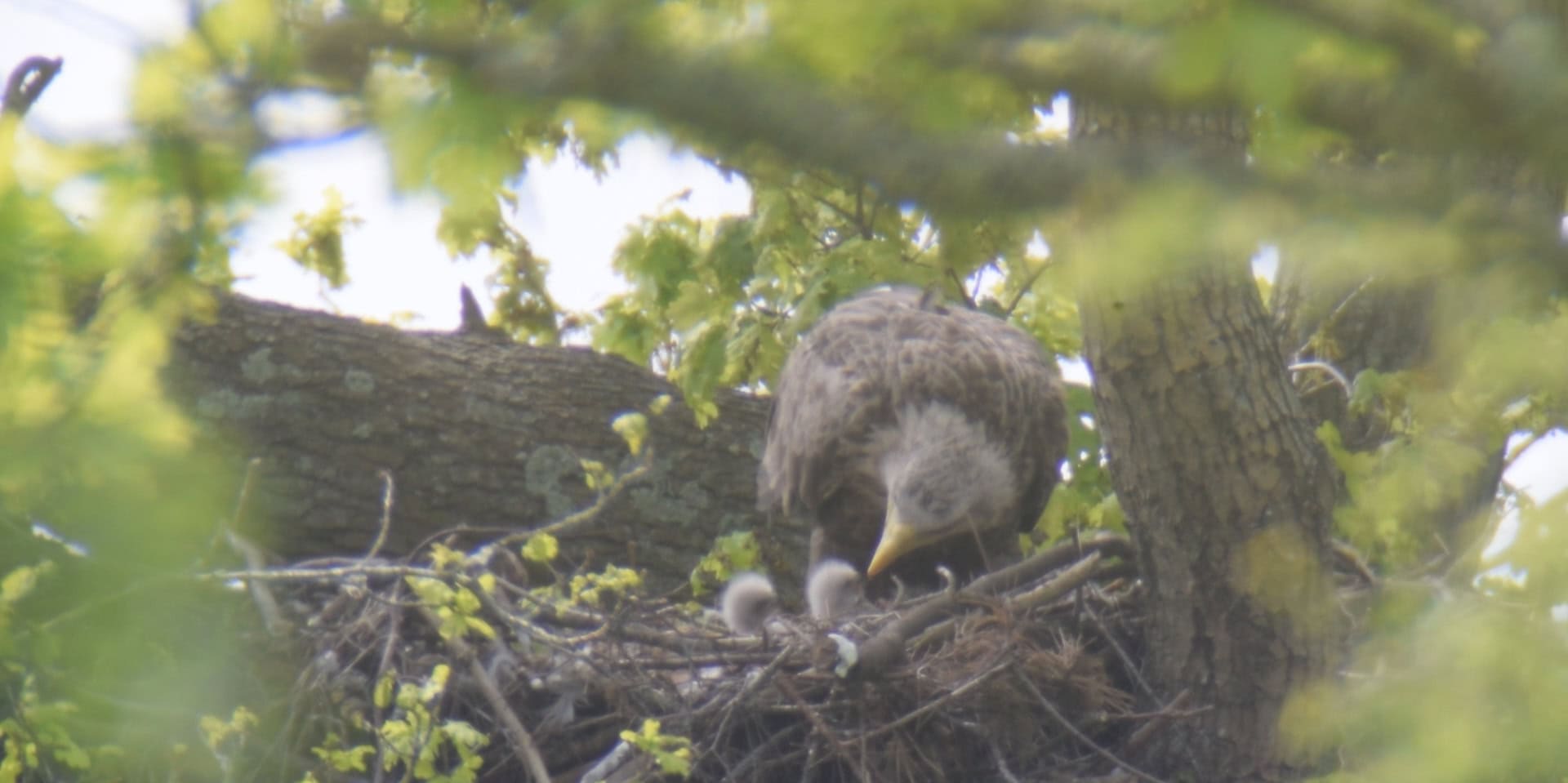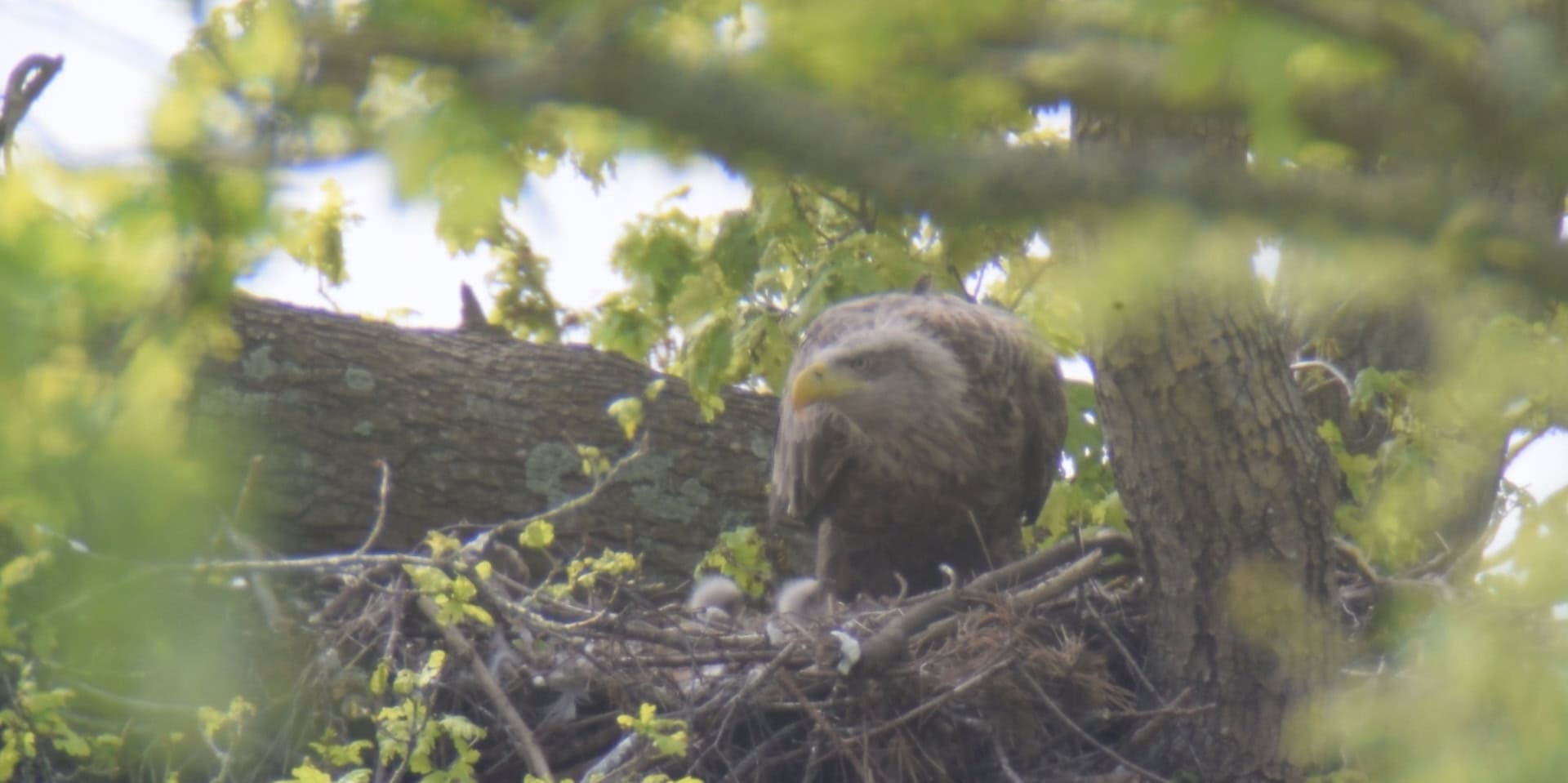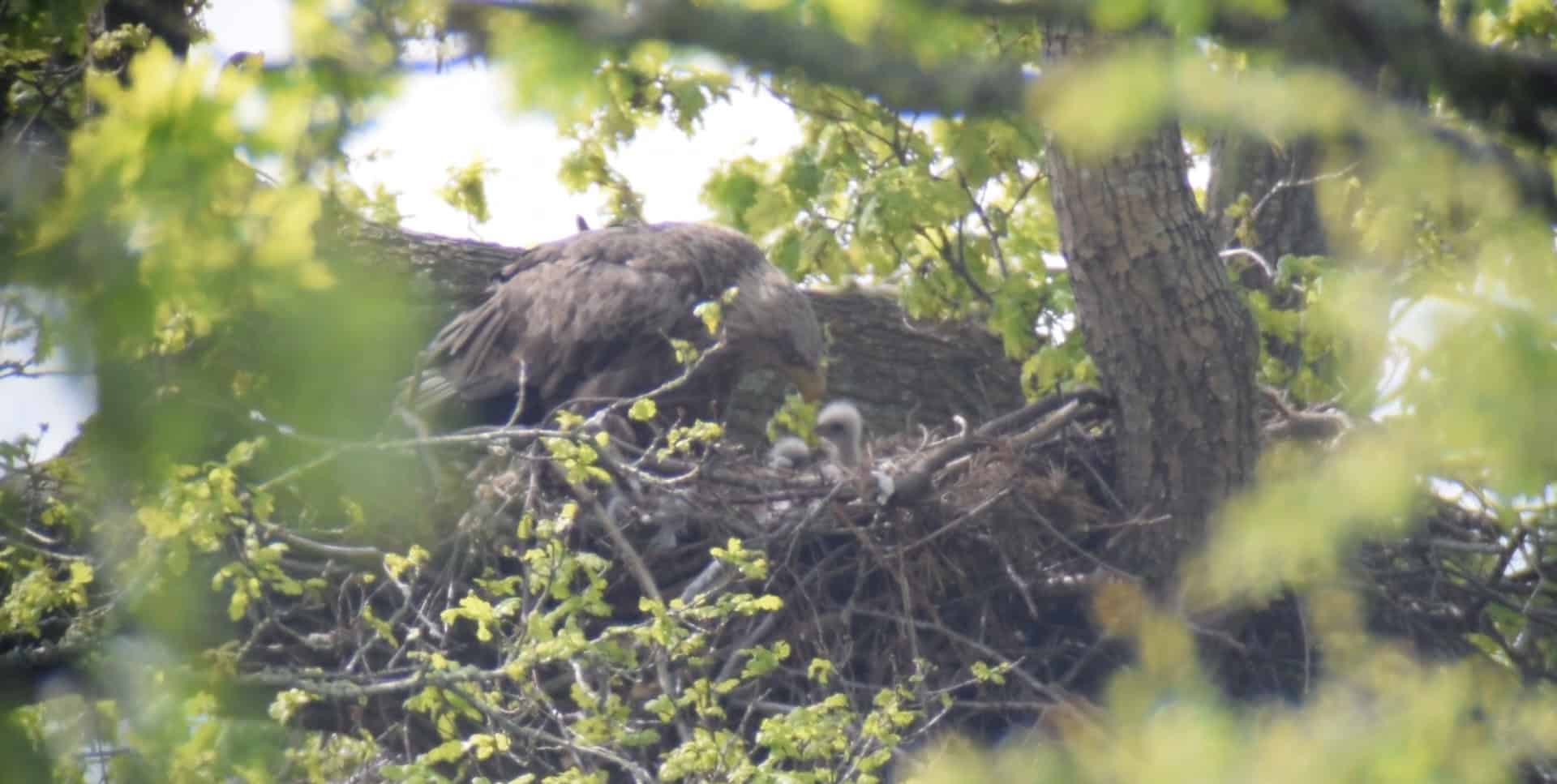Two white-tailed eagle chicks have fledged from a nest in England, only the second time these iconic birds have bred here for over 240 years. The chicks were reared by a pair of white-tailed eagles released by Forestry England and the Roy Dennis Wildlife Foundation’s project to return this lost species to England.
The chicks, both males, are the offspring of two white-tailed eagles released by the project in 2020. The parent birds – female G405 and male G471 – were the same pairing that last year successfully raised a single male chick (G625), the first white-tailed eagle to be born in southern England since 1780.

Fitted with satellite tags
The two chicks – G636 and G637 – are fitted with satellite tags so that the project team can track their progress. Over the last year they have used satellite data to follow last year’s chick (G625) as he has explored widely across the UK travelling as far as the north of Scotland.
White-tailed eagles typically reach breeding maturity at around four or five years old. From the birds released by the project, four pairs have now formed and established territories in southern England. It is hoped that these other pairs will breed in future years.
Dennis: This is a very significant milestone
Roy Dennis OBE, Founder of the Roy Dennis Wildlife Foundation, said,
“Restoring a breeding population in southern England, where the species was once widespread, has been our ultimate goal. So, to see this second year of breeding success is really encouraging. It is still early days, but this is a very significant milestone.
“We are always so heartened to see the support of so many people towards these magnificent birds and the positive reactions those lucky enough to have seen one have. This success demonstrates our ability to restore nature, including very large iconic species; nature recovery requires even greater effort from us all.”

Egerton-Read: We hope this project can help inspire the restoration of our natural heritage
Steve Egerton-Read, White-Tailed Eagle Project Officer for Forestry England, said,
“We have spent the last few months closely watching this pair of eagles, hoping that they would successfully breed again this year. Things looked promising throughout the spring, but you never know if they will ultimately be successful. When we first saw two chicks appear in the nest it was tremendously exciting! For both to make it to fledging demonstrates the abundance of food in this landscape and the suitability of southern England for these birds.
“Restoring lost species like white-tailed eagles is a critical element in nature recovery and a key part of Forestry England’s work within the nation’s forests. We hope this project can help inspire the restoration of our natural heritage.
“We will continue to work to re-establish these birds as a breeding species across the region, with the aim that future generations will be able to enjoy seeing them as a regular sight in the skies above where they live.”
White-tailed eagles are Britain’s largest birds of prey with a wingspan of up to 2.5 metres and were once widespread across England. Human persecution caused their extinction, with the last pair breeding in southern England in 1780. In 2019, Forestry England and the Roy Dennis Wildlife Foundation began reintroducing these iconic birds to the English landscape.
37 young white-tailed eagles released
To date, 37 young white-tailed eagles have been released by the reintroduction project.
This includes eight birds released this summer from the team’s base on the Isle of Wight. Currently, 22 of these birds have survived. An additional three young white-tailed eagles have now been bred in the wild by the released birds.

Releases conducted under licence from Natural England
The reintroduction of white-tailed eagles is conducted under licence from Natural England, the Government’s wildlife licensing authority. Birds for release are collected from wild nests in Scotland under licence from NatureScot before being transported to England with valuable support from Civil Air Support.
The birds are subsequently reared and released on the Isle of Wight, all birds released by the project are fitted with satellite tags.
Location protected
The location of this year’s nest, on private land with no public access, is not being disclosed for the welfare of the birds and to prevent any disturbance to them or the landowner either this year or if the birds return to breed at the same location.
News shared by Susan on behalf of Forestry England. Ed




